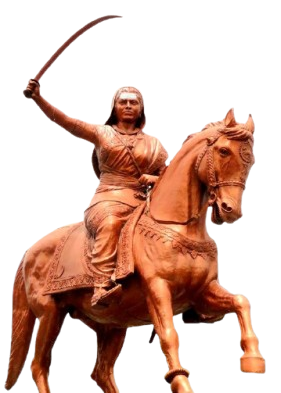Why in the News?
The Ministry of Culture is commemorating 200 years of Rani Chennamma’s victory over the British, marking her as a pioneering figure in India’s early anti-colonial resistance.

Who was Rani Chennamma?
- Birth and Early Life: Born on 23 October 1778 in Kakati village, Belagavi district, Karnataka, to a Lingayat family known for valour and self-reliance.
- Marriage: Married at the age of 15 to Raja Mallasarja Desai, ruler of Kittur, a small princely state in present-day Karnataka.
- Ascension to Power: After her husband’s death in 1816, and the death of her only son, she adopted Shivalingappa as her heir to secure the throne.
- Conflict with the British: The British East India Company rejected the adoption under the Doctrine of Lapse, declaring Kittur annexed to British India.
- Battle of Kittur (1824): When John Thackery, the British political agent at Dharwad, attacked Kittur with 20,000 troops, she led her army personally and killed Thackery in battle.
- Resistance and Leadership: Trained in horse-riding, swordsmanship, and military strategy, she employed guerrilla tactics and rallied local soldiers and peasants against British forces.
- Defeat and Imprisonment: After initial victory, the British reinforced their attack, captured Kittur Fort, and imprisoned her at Bailhongal Fort, where she died in 1829.
- Historical Position: Recognised as India’s first female freedom fighter, her uprising predates the Revolt of 1857 and symbolizes early defiance against colonial annexation.
Back2Basics: Doctrine of Lapse
|
| [UPSC 2014] What was/were the object/objects of Queen Victoria’s Proclamation (1858)? 1. To disclaim any intention to annex Indian States 2. To place the Indian administration under the British Crown 3. To regulate East India Company’s trade with India Select the correct answer using the code given below: (a) 1 and 2 only* (b) 2 only (c) 1 and 3 only (d) 1, 2 and 3 |
Get an IAS/IPS ranker as your 1: 1 personal mentor for UPSC 2024

